| |
Hepatitis A, B and C in New York City: 2019 Annual Report
|
| |
| |
https://hepfree.nyc/wp-content/uploads/2020/12/Viral-Hep-2019-Annual-Report_Final_Web.pdf
About This Report:This report was developed by the New York City Department of Health and Mental Hygiene and provides surveillance data and summaries of viral hepatitis program activities from January 1, 2019, through December 30, 2019. This report is required pursuant to Local Law 43 of 2015. For additional details about the use of denominators and definitions in this report, please see Appendix 1. For more information, email hep@health.nyc.gov.
Latino and Black New Yorkers having 2.9 and 2.6 times the rate of death from hepatitis C, respectively, compared to White New Yorkers. Social determinants of health-such as lack of affordable housing and criminalization of drug use-drive new viral hepatitis infections.1
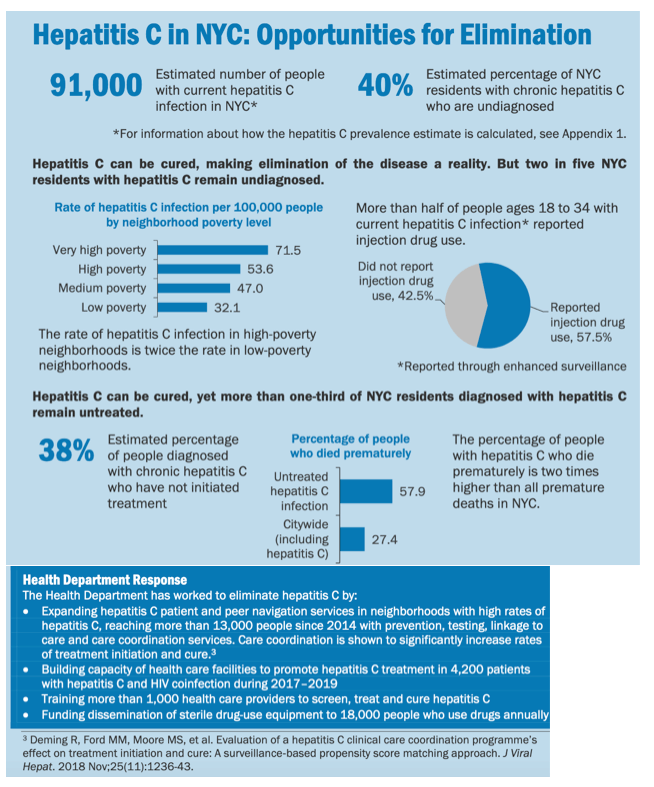
New Chronic HCV Cases in NYC 2010-2019: 4427 in NYC in 2019 reported

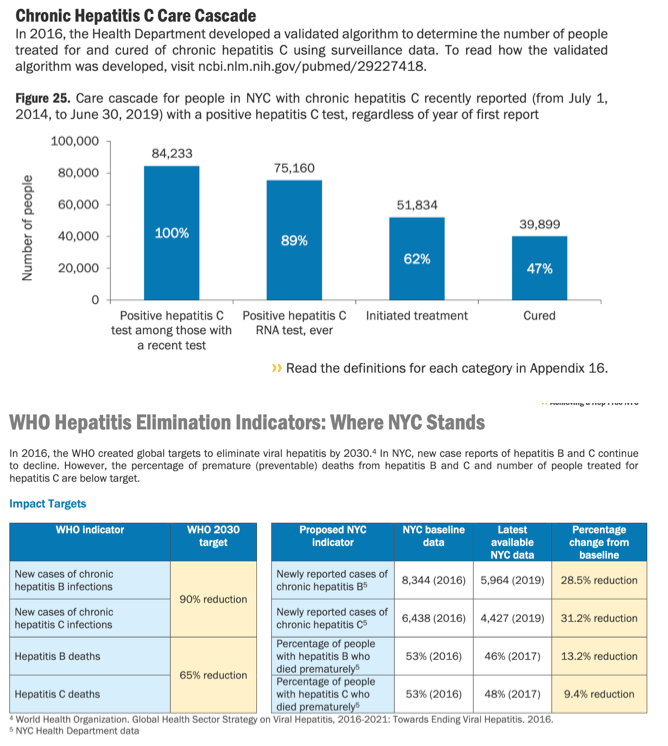
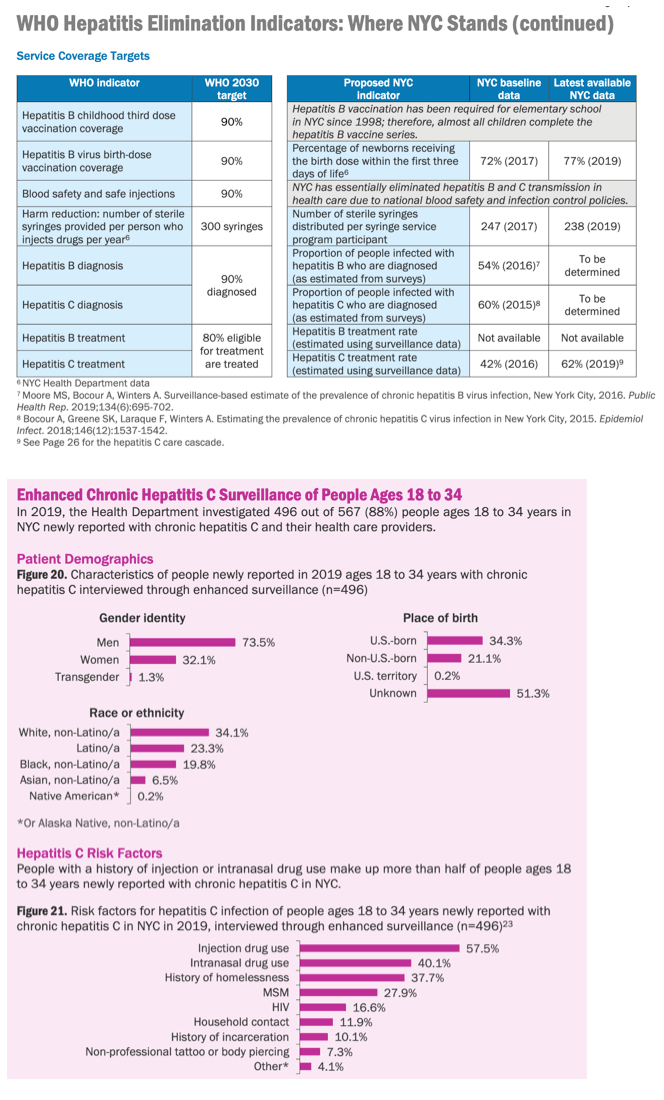
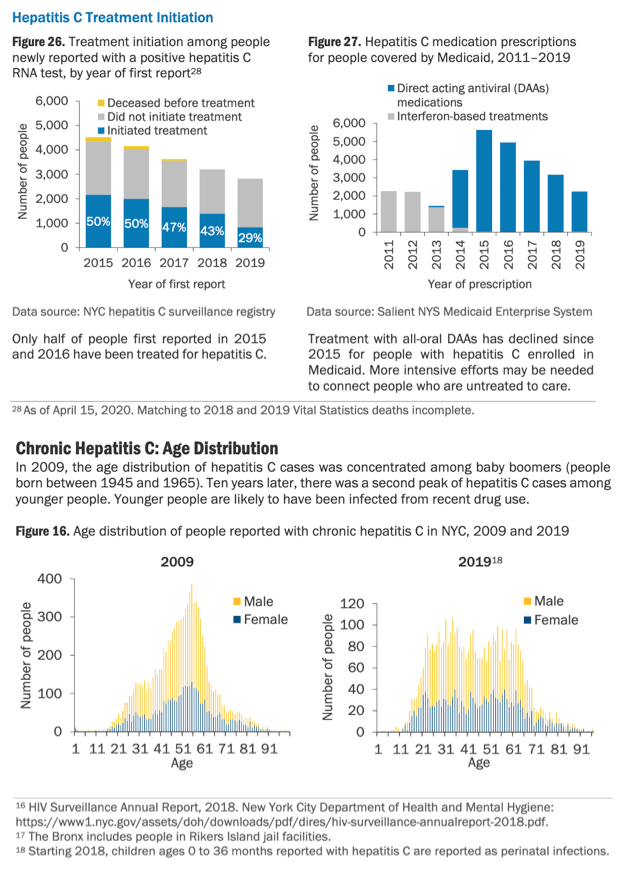
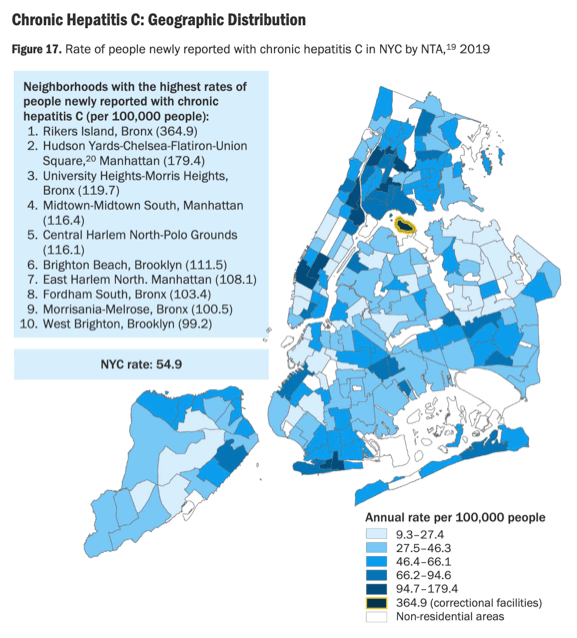

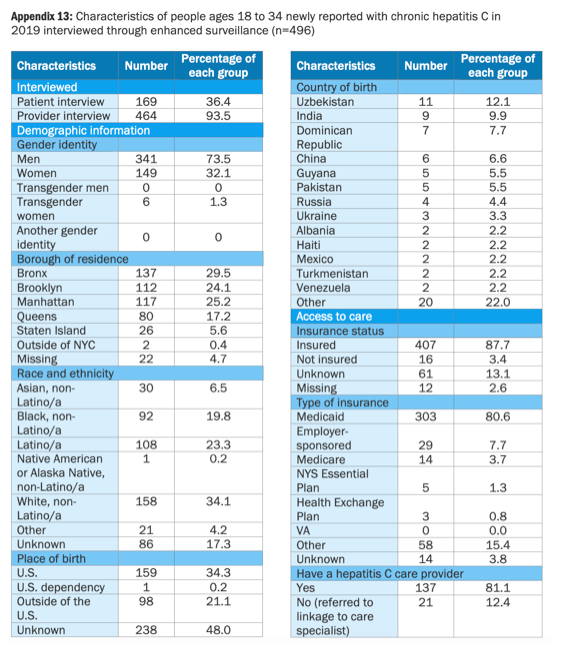
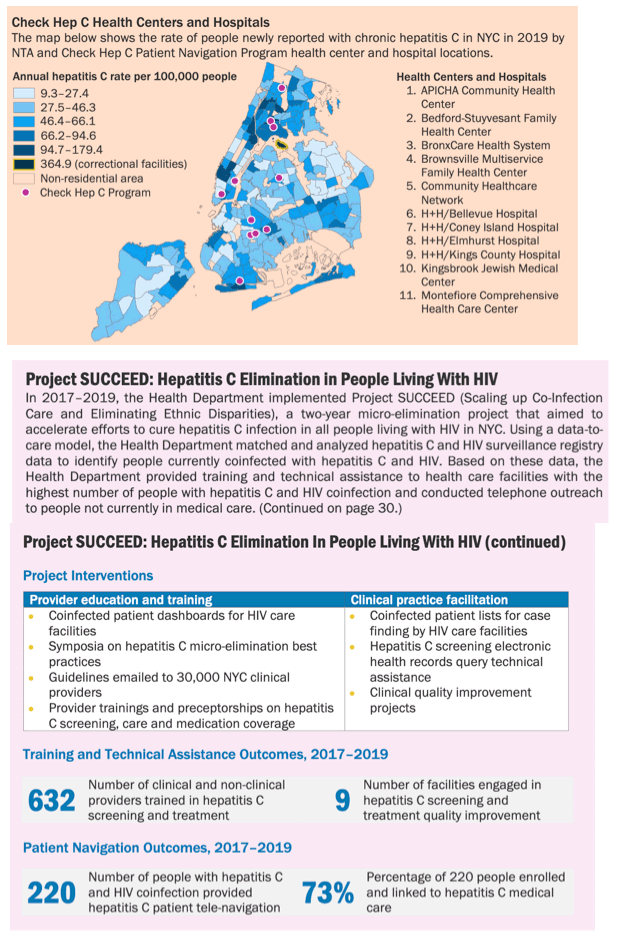
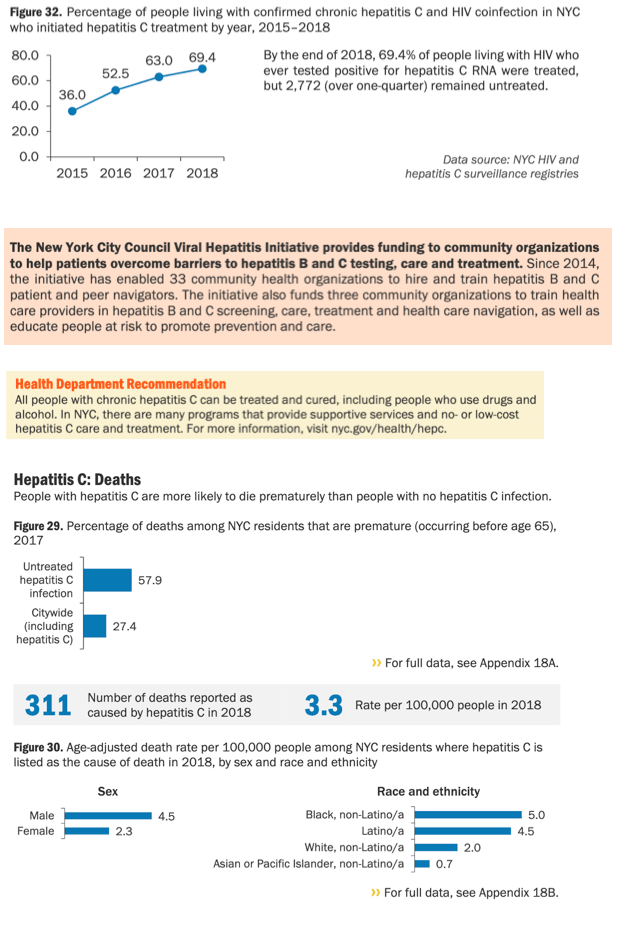

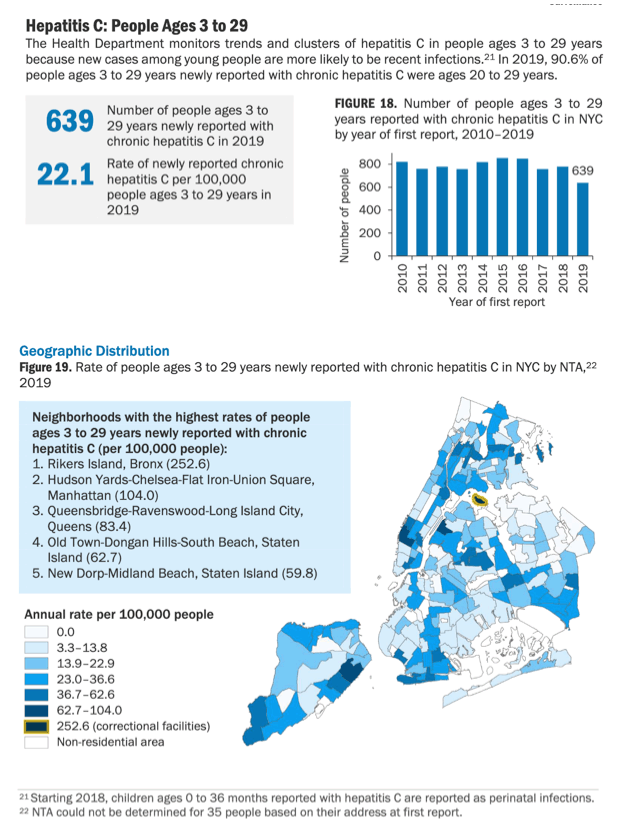
Cluster Investigation: MSM Living With HIVIn March 2019, a Manhattan provider reported acute hepatitis C infection in eight people who were MSM living with HIV. Six of the men reported snorting, smoking or injecting crystal meth. Two people were re-infected; they had been previously treated and cured for hepatitis C. The Health Department released a Health Alert to health care providers promoting hepatitis C testing for high risk patients. See the Health Department's health alert at www1.nyc.gov/site/doh/providers/resources/health-alert-network.page.In addition, the Health Department facilitated molecular sequencing of specimens at NYS Wadsworth Laboratory to identify linkages between cases
Working Toward Health Equity Through Hepatitis Elimination
Health equity is when everyone has the opportunity to be as healthy as possible. Yet, many people with hepatitis B and C face barriers to accessing health care, such as limited health insurance or health care services that are unresponsive to cultural or linguistic needs. They may also face stigma and discrimination in the clinical setting, particularly people who use drugs, people of color, people living with HIV and people who have been incarcerated. In NYC, there are wide racial disparities in mortality from hepatitis B and hepatitis C, with Asian and Pacific Islander New Yorkers having more than seven times the rate of death from hepatitis B as compared to White New Yorkers, and Latino and Black New Yorkers having 2.9 and 2.6 times the rate of death from hepatitis C, respectively, compared to White New Yorkers. Social determinants of health-such as lack of affordable housing and criminalization of drug use-drive new viral hepatitis infections.1
The Health Department works toward health equity using an asset-driven approach:
•Promoting hepatitis care that uses a harm reduction and human rights approach2
•Recruiting peer and patient navigators from affected communities who are uniquely able to build trust and address patients' holistic needs
•Building capacity of health care providers to provide culturally responsive hepatitis care
•Informing policies that increase access to care, such as removal of treatment restrictions due to drug or alcohol use
•Developing a viral hepatitis elimination plan with a health equity framework
| |
| |
| |
|
|
|